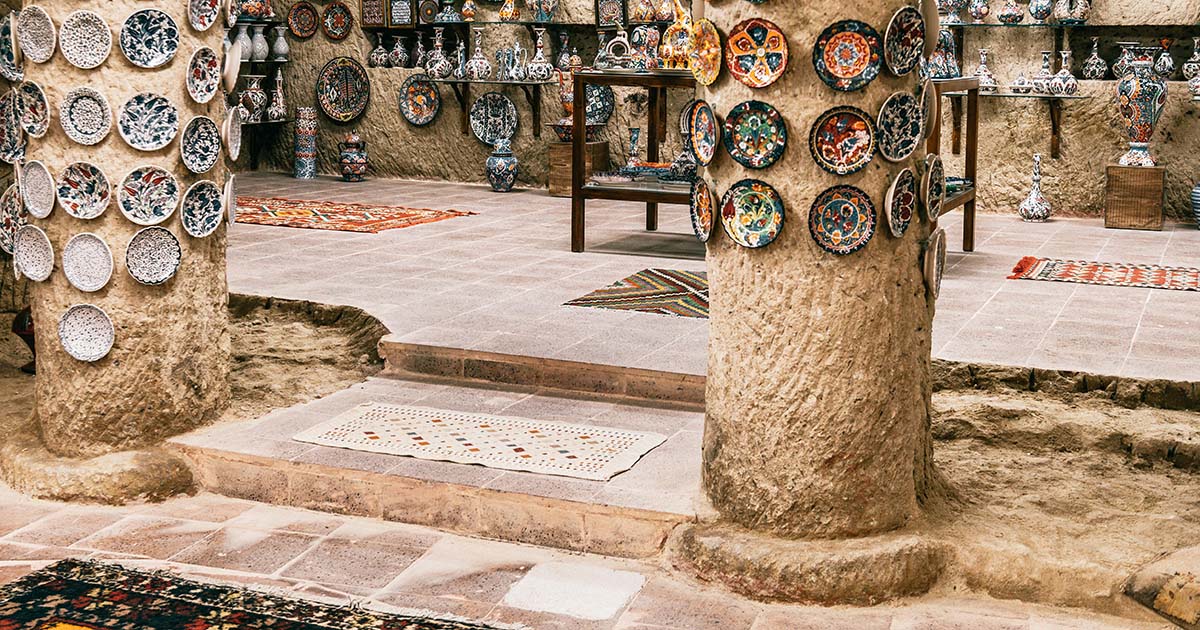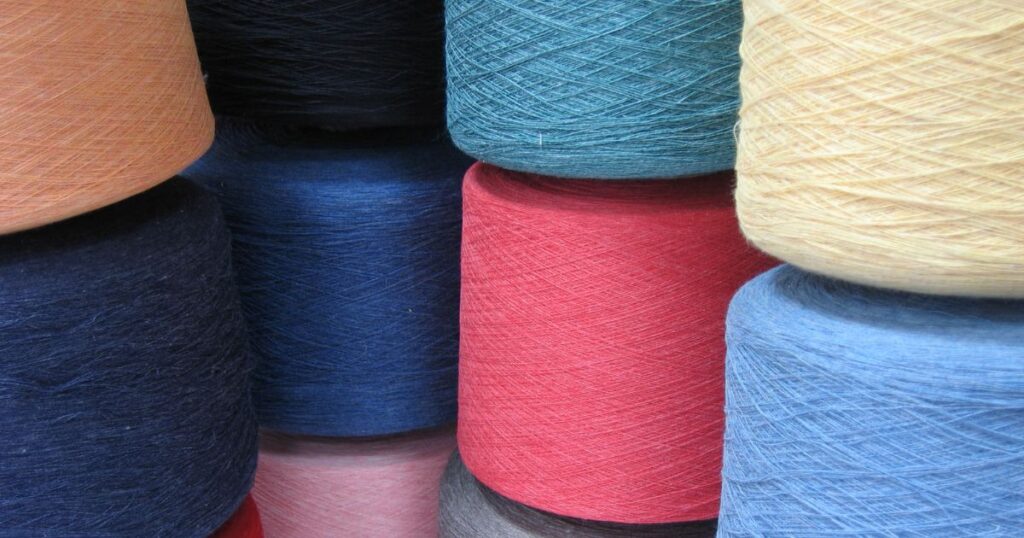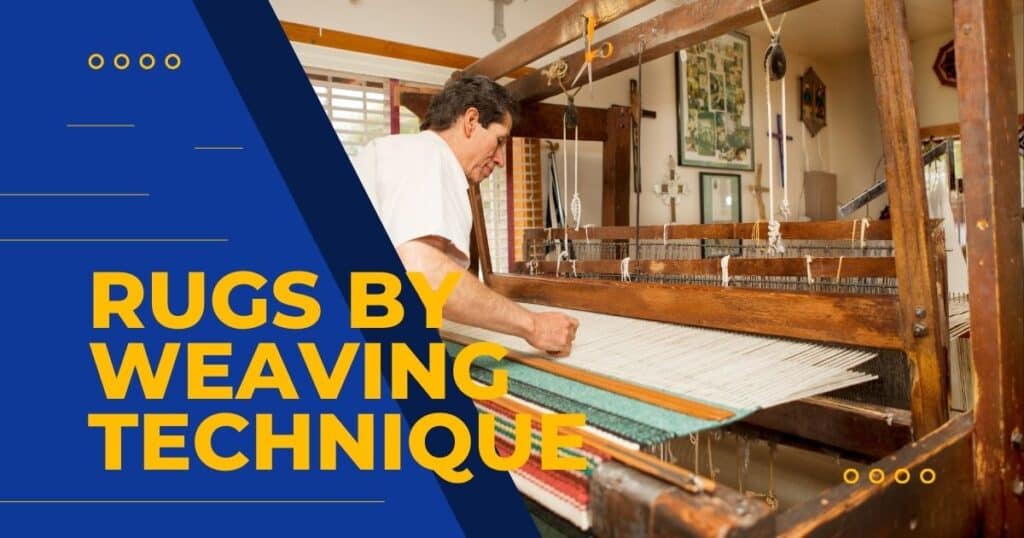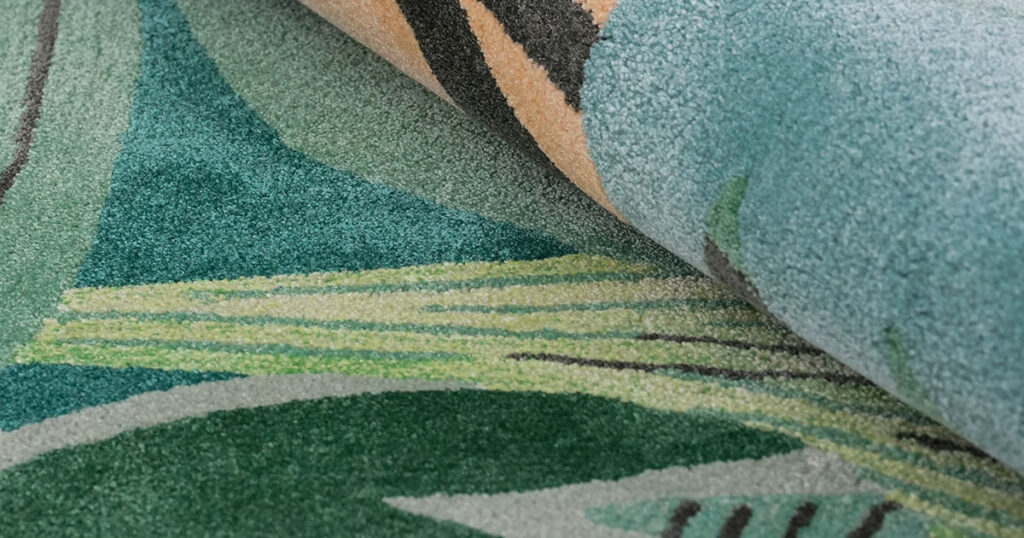When selecting flooring for museum spaces, tufted rugs and carpets offer unique advantages that balance functionality, aesthetics, and visitor experience.
This guide walks you through key considerations for museum carpet selection.
Why Tufted Carpets for Museums?
Tufted carpets are the most common method used to produce modern floor coverings. The tufting process punches yarn through a backing material to create a piled surface, offering versatility in design and texture while maintaining durability.
Museums choose tufted carpets for several compelling reasons. These carpets typically last 10-15 years even under heavy foot traffic, making them a stable, long-lasting solution that balances practicality with design possibilities.
Beyond basic floor covering, tufted carpets serve multiple practical functions in museum environments. They manage sound, enhance visitor comfort, and provide a visually appealing backdrop for exhibits, all while meeting strict safety and accessibility standards.
Functional Benefits for Museum Spaces
Sound Management
Tufted carpets excel at noise reduction, a critical feature in museum environments. They absorb airborne noise as effectively as dedicated acoustic materials, dampening footsteps and ambient sound to maintain the quiet atmosphere needed for visitor focus and contemplation.
This acoustic control is especially valuable in cavernous halls, interactive spaces, or multimedia exhibits where noise control creates a better experience for all visitors.
Safety and Comfort
Visitor comfort directly impacts the museum experience. Carpeted floors provide cushioning and a non-slip surface that increases safety while reducing fatigue for guests and staff who spend hours on their feet.
The slight “give” underfoot compared to hard floors makes a substantial difference during extended visits. This cushioning also helps protect visitors in case of falls – an important consideration for venues welcoming children and elderly visitors.
Wayfinding and Space Definition
Smart carpet design helps guide visitor movement and define specific zones without physical barriers. Different colors or patterns can signal transitions between exhibit sections or highlight specialized areas.
This approach to “soft signage” supports intuitive navigation through complex spaces, helping visitors understand where to walk, stand, or gather. Museums can use carpet design to subtly direct traffic flow and enhance the overall visitor journey.
Floor Protection and Maintenance
In historic buildings or high-traffic areas, carpets protect underlying floors from wear and damage. The carpet absorbs the impact of constant foot traffic, sparing original flooring from abrasion and wear.
Carpets also trap dust and dirt particles, preventing them from circulating onto delicate artifacts – provided a regular cleaning routine is maintained. This protective function helps preserve both the facility and its contents.
Aesthetic Roles in Museum Design
Setting the Tone and Atmosphere
The color, pattern, and texture of carpet strongly influence a room’s atmosphere. Museums use carpets to establish or enhance exhibit themes – like deep blue carpeting for an underwater gallery or ornate patterns to complement historical displays.
In some innovative installations, the carpet itself becomes as important as the displayed objects in creating an immersive environment. This shows how thoughtful flooring choices can pull visitors into the exhibition narrative.
Visual Complement to Exhibits
Well-chosen carpets enhance the visual presentation of artworks and artifacts. Neutral, subdued designs are common in art galleries to keep the focus on the displayed works.
The carpet serves as a backdrop that complements exhibit lighting and wall colors without competing for attention. In science or cultural exhibits, bolder carpet patterns might reinforce content themes or guide the visitor experience.
Creating Cohesion and Identity
Floor coverings help tie together the overall interior design, coordinating with wall colors, furniture, and display cases for a unified look. Custom-patterned carpets can incorporate elements from the institution’s branding to subtly reinforce identity.
The flooring becomes a canvas that reflects the subject matter – whether using earthy tones in a natural history museum or contemporary patterns in a modern art space.
Different Museum Types
Art Museums and Galleries
Fine art museums typically prefer understated carpet designs – neutral colors and low pile – to avoid distracting from artwork. Carpet selection focuses on:
- Low-key designs that don’t compete with exhibits
- Dark carpets that reduce glare and reflection
- Regular cleaning protocols to prevent dust that might damage paintings
- Firm, low-pile constructions that allow for movement of art installations
In art museums, carpets must be understated, meticulously maintained, and compatible with conservation requirements while providing acoustic benefits and visitor comfort.
History and Cultural Heritage Museums
Historical museums often use carpets that contribute to authenticity and context. In these settings, carpets might:
- Feature custom designs with period-appropriate motifs
- Use natural materials like wool for a traditional look
- Protect original building interiors while evoking historical styles
- Maintain chemical stability to avoid off-gassing that could harm artifacts
For heritage museums, tufted carpets serve as both practical floor protection and elements of the exhibit narrative.
Science, Children’s, and Interactive Museums
High-energy environments like science centers and children’s museums need carpets that can handle intense activity. These spaces benefit from:
- Extremely durable construction that withstands heavy foot traffic
- Stain-resistant fibers that handle spills and frequent cleaning
- Modular carpet tiles that allow for easy replacement of damaged sections
- Bright colors and playful patterns that stimulate curiosity
- Acoustic control to manage noise levels in active environments
These museums often integrate carpets into the exhibit experience while creating safer, quieter spaces.
Key Factors for Carpet Selection
Durability and Wear Resistance
Museums see heavy foot traffic from school groups, events, and daily visitors. Select commercial-grade tufted carpets specifically rated for heavy traffic (EN 33 “Heavy Commercial” classification).
Look for:
- High-density pile construction
- Higher face weight for better wear resistance
- Nylon fiber (especially solution-dyed nylon) for excellent wear characteristics
- Strong tuft bind strength so fibers stay attached to backing
- Loop pile construction that hides wear in high-traffic areas
Choose carpets engineered for longevity that will maintain appearance and integrity even after millions of footsteps.
Acoustic Performance
When evaluating carpet options, consider their Noise Reduction Coefficient (NRC) or similar acoustic ratings. Thicker carpets or those with cushion backing generally perform better at absorbing sound across frequencies.
For multimedia spaces or museum theaters, consider carpets with acoustic underlay or carpet tiles designed specifically for sound absorption. A well-chosen tufted carpet acts as an effective “acoustic muffler,” enhancing presentations, guided tours, and the general atmosphere.
Fire Rating and Safety
All museum carpets must meet local fire safety codes. In North America, tufted carpets should comply with ASTM E648 (Radiant Panel Test) Class I for flame spread. In the EU, museums typically require a Cfl-s1 or better rating, with Bfl-s1 often preferred for critical areas.
Verify the carpet’s fire certification in specification sheets or request testing reports. This non-negotiable safety factor protects visitors and priceless artifacts in the event of a fire.
Maintenance and Cleaning
Museums require pristine conditions, making ease of maintenance a major consideration.
Look for:
- Stain resistance for areas where food or drinks might be present
- Solution-dyed yarns for superior stain and fade resistance
Compatibility with frequent vacuuming and periodic deep cleaning - Dense, low pile construction that shows less dirt
- Multicolor or patterned designs that mask minor stains between cleanings
For high-traffic areas, carpet tiles can be beneficial because individual sections can be lifted for cleaning or replacement if damaged.
Comfort and Ergonomics
While secondary to durability, comfort influences the visitor experience. If your museum includes guided tours where people stand for extended periods, carpet with some cushioning reduces fatigue.
Balance softness with functionality – enough give to be comfortable, but firm enough to allow for rolling carts, strollers, and mobility devices.
For exhibit areas, use firm, low-profile padding or no pad to prevent tripping hazards or instability for wheelchair users.
Budget Considerations
Several factors influence where a particular product falls in this spectrum:
- Fiber material: Wool carpets cost more than synthetic fibers like nylon or polypropylene
- Construction quality: Higher density and pile weight use more yarn and generally cost more
- Design complexity: Custom patterns or multi-level piles increase manufacturing costs
- Quantity: Larger projects may qualify for bulk pricing discounts
Remember to factor in installation labor and floor preparation in your budget, as these can sometimes equal the cost of the carpet itself.
Also consider lifecycle costs – a premium carpet might cost more initially but save money by lasting longer with less maintenance.
Installation & Maintenance Best Practices
Professional Installation
Always use experienced commercial carpet installers for museum projects. Professional installation ensures the carpet is laid flat and securely, preventing trip hazards. Skilled installers know how to align patterns correctly, create invisible seams, and work around exhibits or display cases.
Surface Preparation
Before carpet installation, ensure the subfloor is clean, dry, and level. Test for moisture problems and address any needed leveling. Proper floor preparation prevents uneven wear and soft spots under the carpet.
Regular Care
The most important maintenance task is routine vacuuming. High-traffic exhibit areas should be vacuumed daily using commercial vacuum cleaners with strong suction and HEPA filters to prevent dust redistribution.
Address spills immediately with proper spot cleaning techniques to prevent permanent stains. Develop a periodic deep cleaning schedule (every 6-12 months for galleries) using hot water extraction or low-moisture cleaning methods.
Implement preventative measures like entry mats at exterior doors to reduce dirt tracked onto carpets, and consider protective mats in areas of concentrated wear.
Next Steps
Selecting the right tufted carpet for your museum requires balancing functional needs, aesthetic goals, and budget constraints.
As you move forward:
- Assess your specific museum environment and visitor patterns
- Request samples from commercial carpet manufacturers to evaluate quality and appearance
- Consult with design professionals familiar with museum spaces
- Calculate both initial and lifecycle costs for different options
- Consider sustainability factors and environmental impact
Ready to transform your museum flooring?
Contact our expert team to discuss custom tufted carpet solutions designed specifically for museum environments.
We’ll help you create a foundation that enhances exhibits, improves visitor comfort, and stands up to the unique demands of your space.




